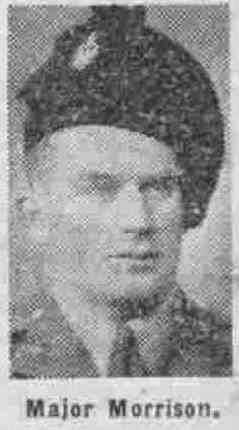
Sefton at D-Day
Col. Edward Maxwell Morrison MC and Bar TD
Written and researched by David Bohl, with the kind help of World War 2 historians world wide.

Born in Ormskirk,1911 E.M.Morrison joined Sefton just before World War 2 and became 3rd team Captain.
Sefton III v Waterloo XV at Waterloo
(Liverpool Daily Post 11/3/1939)
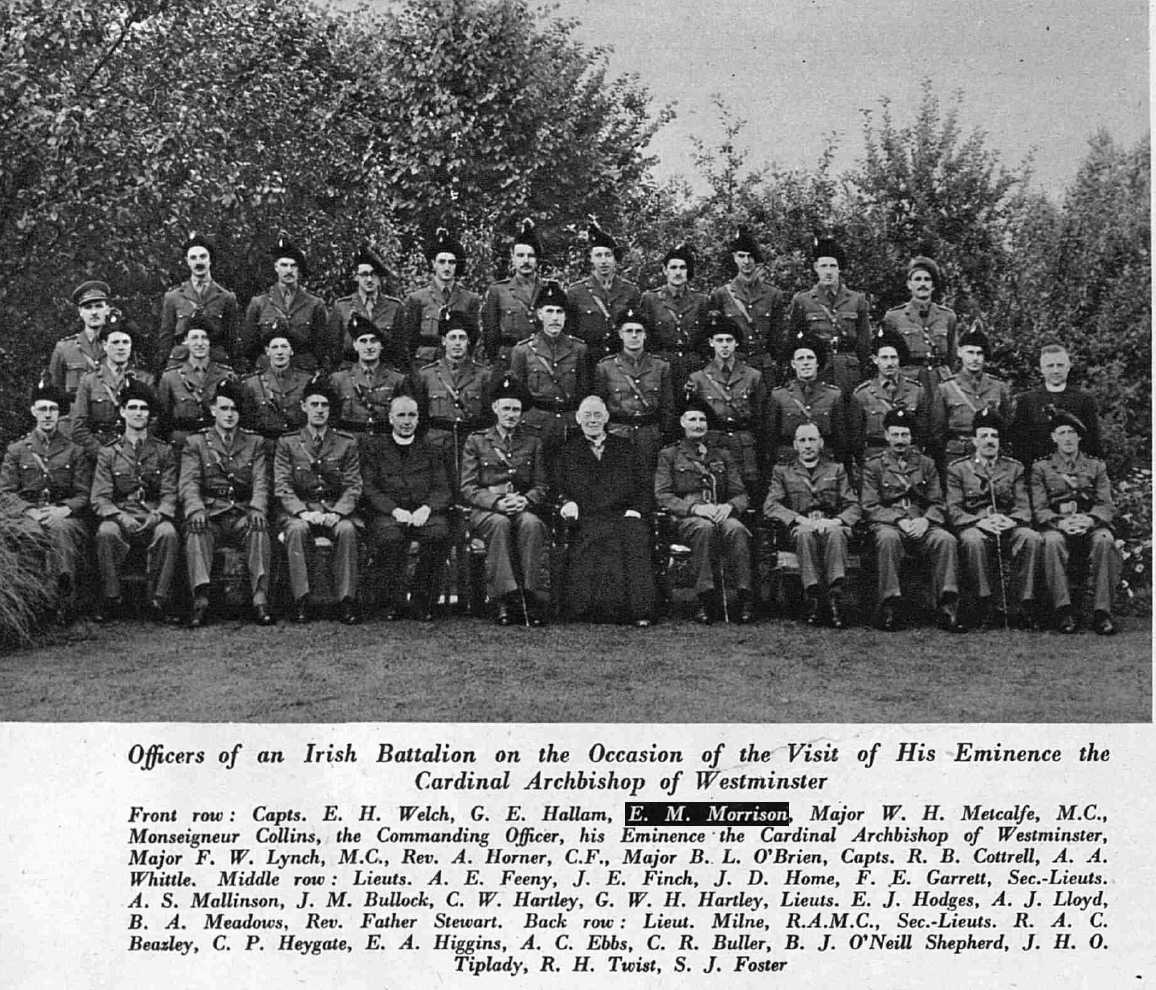
Daily Sketch 21st Nov
1941
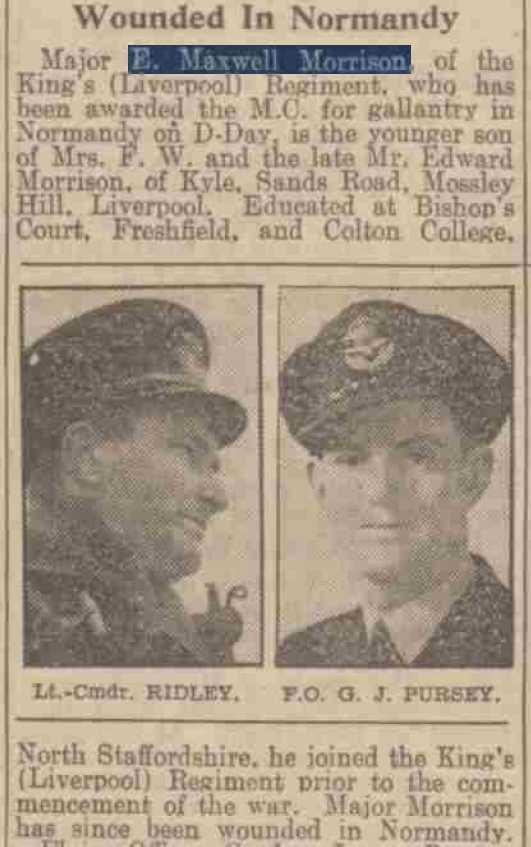 |
|
|
London
Gazette
Entry 1944 - First Military Cross
|
A (Liverpool Irish) Troop 208 Battery RA(V)
Lieutenant J.J Moore writes:
It was a very rough crossing, and, before daylight, as we neared the Normandy coast, the shattering attack started, first with bomber aircraft which saturated the area, and then the Navy behind us. The six Canadian 105mm self propelled guns on our Landing Craft Tank, with several others, opened up, blasting targets on our beach area. Slowly, as the darkness gave way to light, the coast near Courseulles appeared as a dark grey line. Gradually the dim silhouettes of of landing areas at Graye-sur-Mer, east of Courseulles became discernible, with the dull green countryside rising slightly beyond. The whole invasion was a miraculously impressive sight: there were hundreds of landing-craft firing at the coast, and to the rear of them the cruisers Belfast, Diadem, and others, together with the accompanying destroyers were hammering the German fortresses on the almost impregnable Western wall. There were ships as far as the eye could see.
We watched as hundreds of five-inch diameter rockets (LCR) rising alongside us. Three of our "Mustang" planes roared in towards the coast just at that moment, and the second one was accidentally hit by one of our own rockets and blew up, fragmenting into thousands of pieces. Well over to the East there was a huge explosion on a large ship, sending up a massive plume if smoke.
The coast, its forts and its obstacles now seemed very close and well defined. A German reinforced-concrete pillbox fired some shells at the Landing-Craft just to our right, but this was a LCG with two 4.7 inch guns, and having turned slowly around as if badly damaged, it fired a salvo, blasting the pillbox into rubble.
Now slowly overtaking our Landing Craft Tank were the small Assault Crafts that had been launched by the troop carrying ships well to our rear, the Langriddy Castle, the HMCS Prince Henry, the Mecklenburg and others. These assault landing craft were carrying the heroes of the day on to our beach, the infantrymen of the Royal Winnipeg Rifles, and the two beach-companies of the Liverpool Irish, all of these had been cruelly tossed about in these lightweight, flat bottomed landing crafts, packed tightly together, thirty or more to each landing craft unable to see out and almost all violently sick because of the rough seas.
At this stage, just ahead of them, lay the fearsome beach obstacles, the massive iron structures, Element C, the concrete tetrahedra and the crude iron Hedgehogs, all with German "Teller" mines and captured French explosive shells, all tar-coated and crudely wired onto the obstacles. Because of the high winds and stormy weather the tide was much deeper than expected, with the result that bombs thrown at the obstacles by men from special landing crafts (Hedgerow) were almost totally ineffective. We watched as the Assault Landing Crafts carrying the assault troops of the Winnipegs and Liverpool Irish tried to maneuver through the gaps in the barrier of obstacles. Some had the bottom of their landing crafts torn off by jagged obstacles: other were sunk or blown up by exploding mines or shells. Almost one in three of the landing craft were sunk or badly damaged.
For the troops involved in a landing such as this, the greatest fears were of being hit or drowned while still in the water, and then in crossing under fire before reaching the relative safety of the minor sand-hills. Beyond these was a flat plain of some four hundred yards width to the lateral road with no shelter from German machine gunfire. It was incredible that the enemy had survived such a devastating barrage, but several of their reinforced-concrete gun posts, buried in the sand dunes, were nevertheless intact, and the first troops of the Royal Winnipeg Rifles, together with A and B companies of the Liverpool Irish were met with scything machine gin fire. German gun and mortar fire now rained down on to the beach and an incredible fusillade raked the entire length of the narrow shore, catching all of the debarking troops in enfilade. Several men were killed or wounded while still in the water: others staggered limp, wet and seasick to the shore where thousands of bullets were kicking up spurts of sand.
On the Western end of the beach A Company of the Liverpool Irish landed with the leading company of the Royal Winnipegs. Major E.M. Morrison, the A Company [Commander] was the first out of the landing craft: heavily laden, he jumped unwittingly into nine feet of water but managed to stagger ashore. Others disembarking from the same landing craft, including the second in command of the Royal Winnipegs company were killed struggling to the shore. With a mere handful of his troops Major Morrison reached the limited protection of the sand-dunes and established a command post for the "Mike Green" beach area.
His first task was to
rescue the troops wounded on
the shore and bring them up to the sand-dunes. Most of his men reached
him, and when he had gathered enough men, having spotted a nearby enemy
defence post to the rear of the sand-dunes, he led a fierce frontal
charge, killing or capturing several enemy troops. Almost at once
another German command post was seen and immediately attacked with hand
grenades. A white flag appeared and the Germans surrendered with hands
upturned. More enemy troops surrendered and various points around.
Meanwhile heavy gun and mortar fire rained down on the beach and the
dunes. There was a group of buildings inland from the beach from which
mortars were firing: these were instantly charged by a patrol of 20 men
led by Major Morrison charging across the minefield and taking the
Germans prisoner.
The Liverpool Irish
were used as a shock
battalion on D-Day and suffered such casualties that the battalion
would not be reconstituted.
|
|
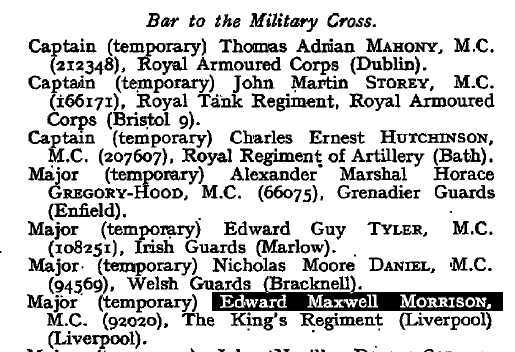
|
|
Liverpool
Echo 19th June 1944
|
London
Gazette Entries
1945-47
|
Sefton Handbook Post WW2 acknowledging his Rank and Military Cross 1947
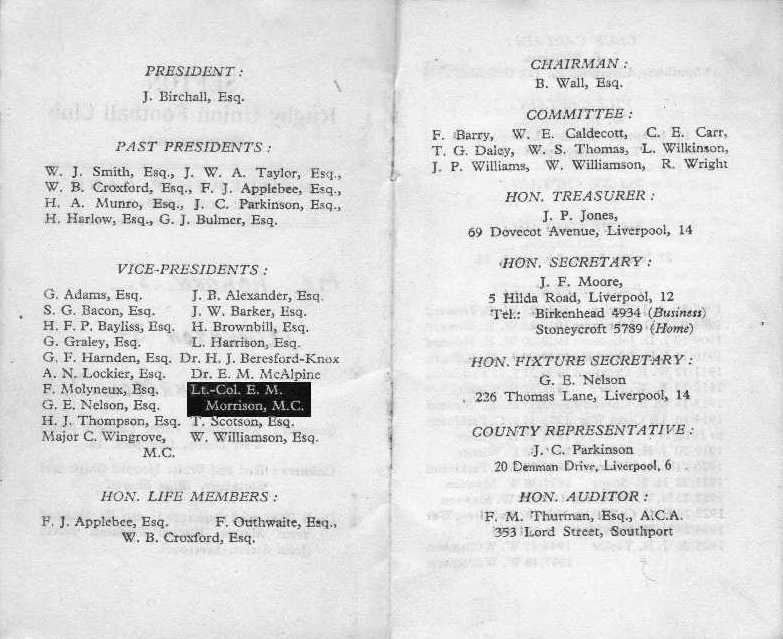
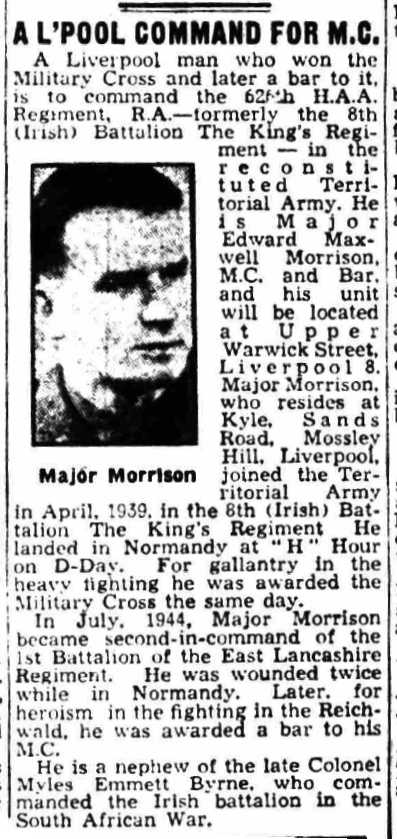
Liverpool Echo 1947
London Gazette Entries - Joins Royal Artillery

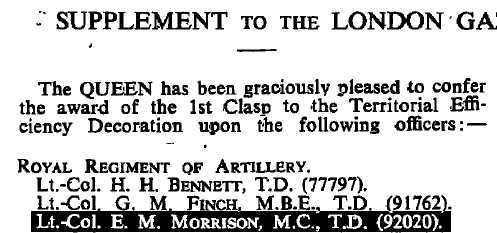
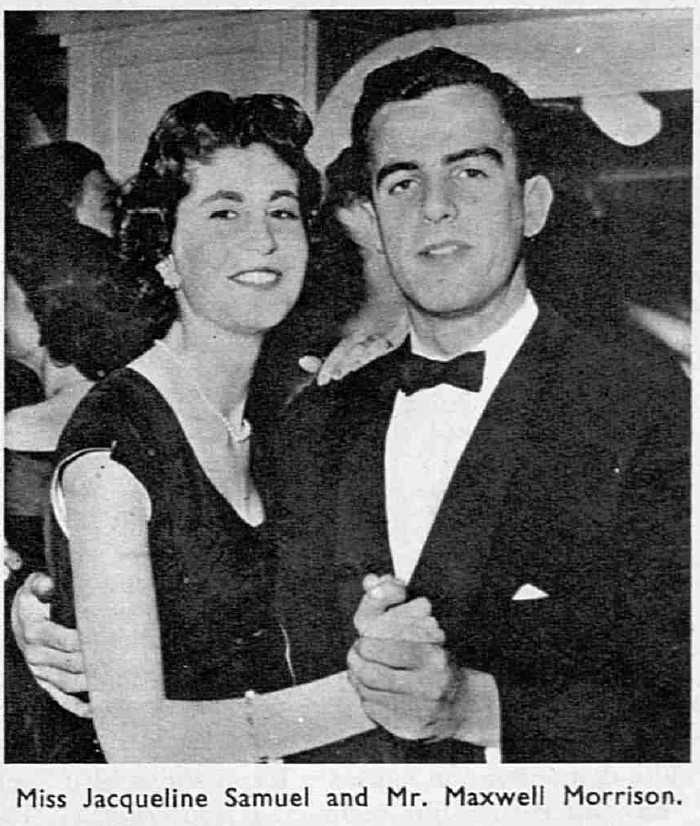
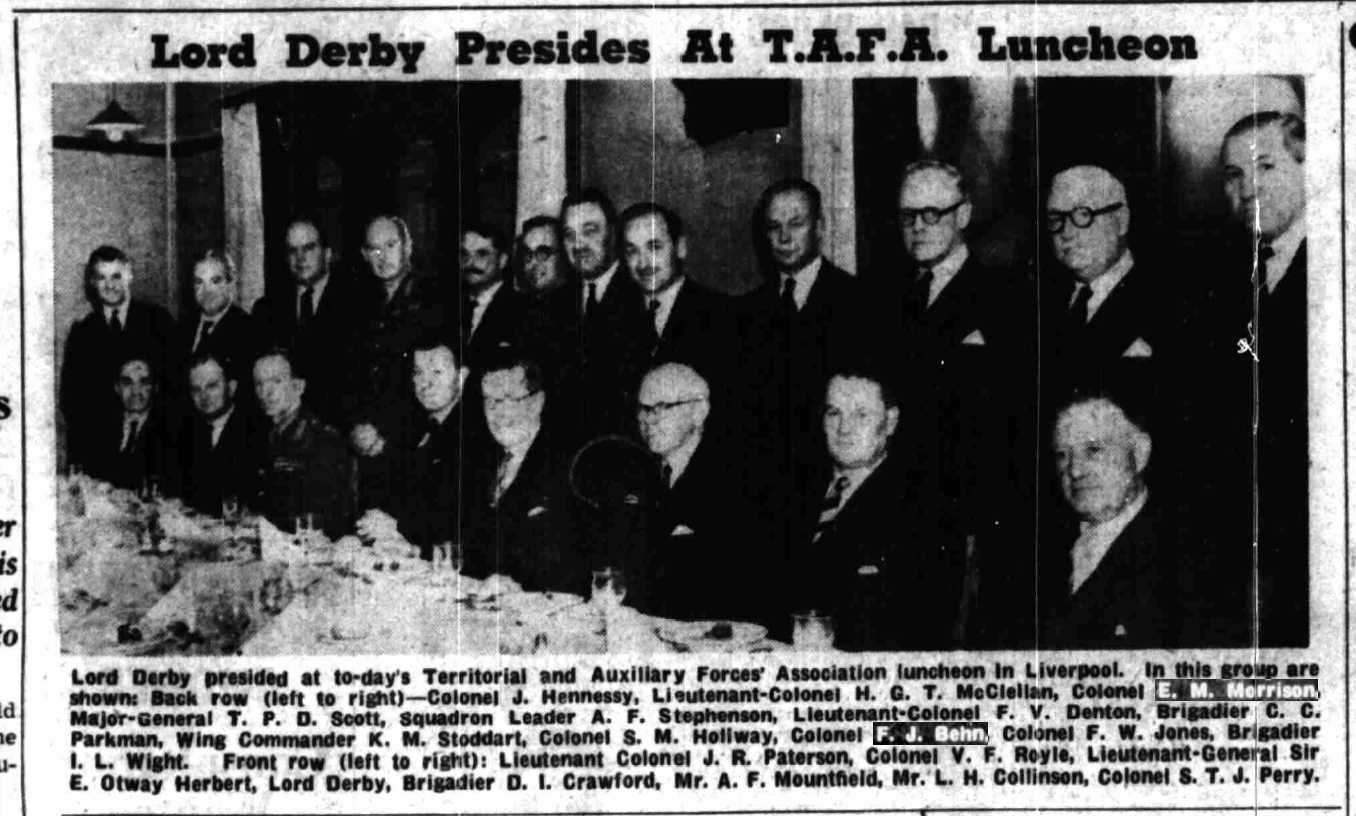
Liverpool Echo 1957 (see ex-Seftonian F.J.Behn)

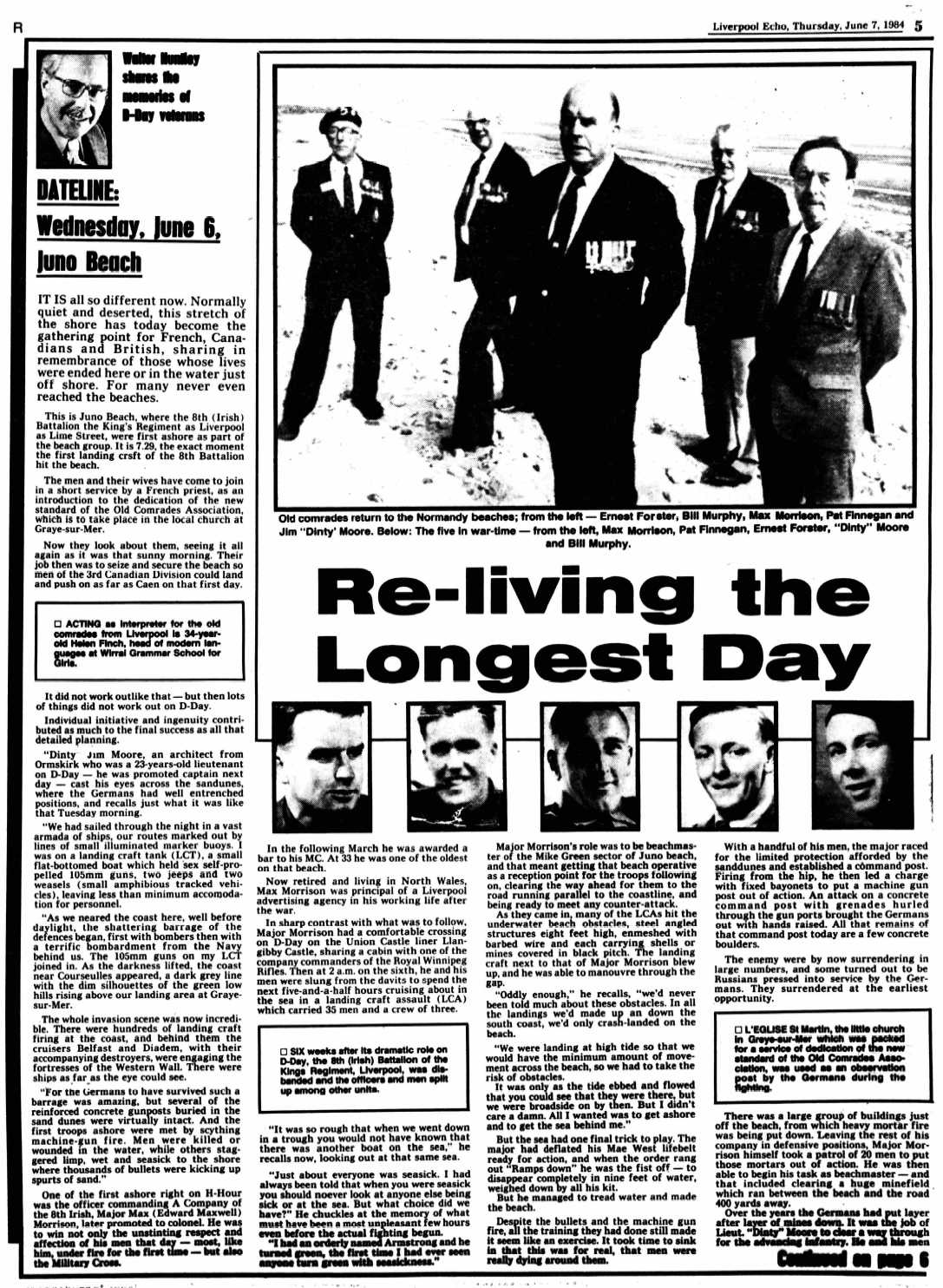
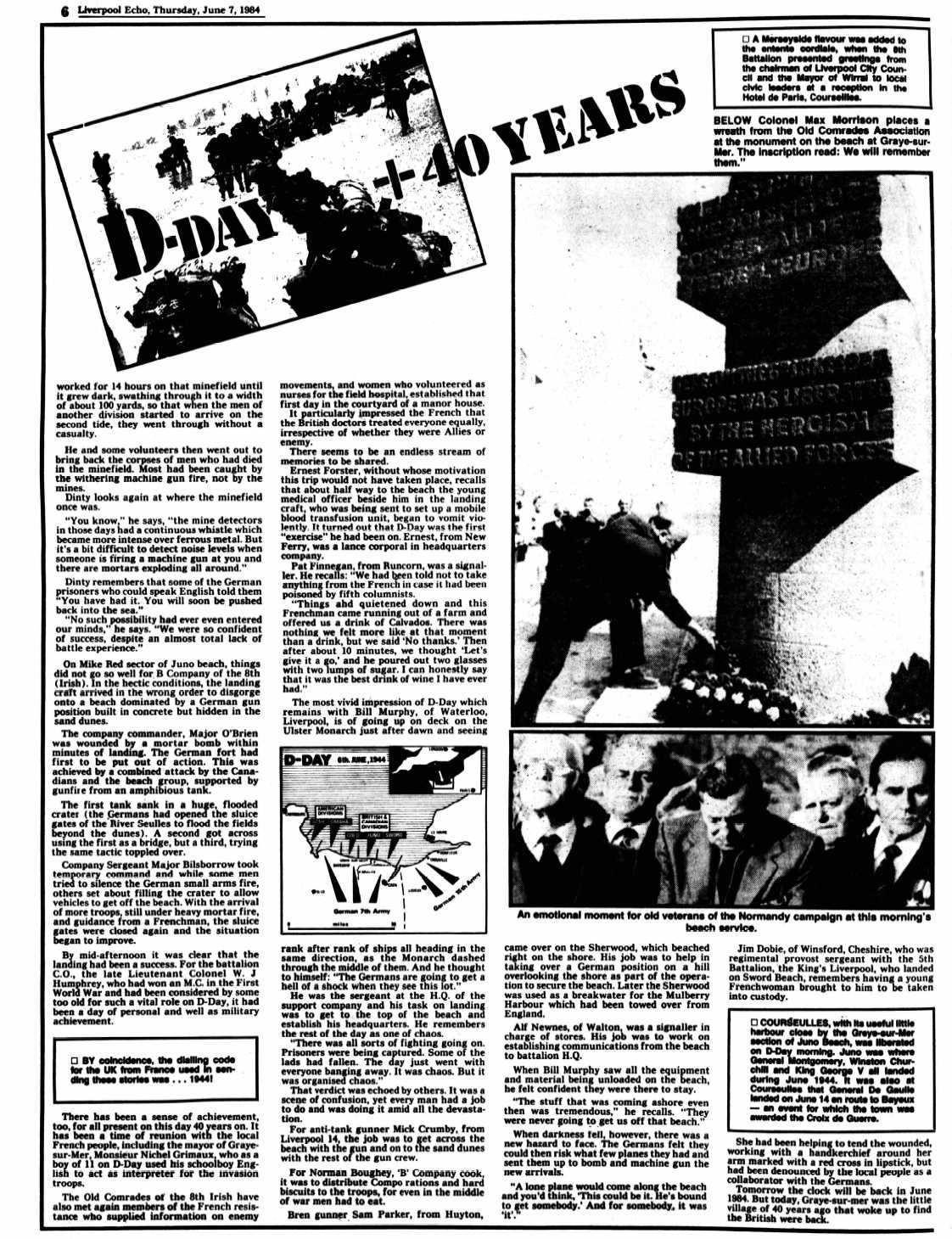

He passed away in Clwyd 1993 and was buried at Allerton Cemetery (Record RC/2/281)
IN LOVING MEMORY OF
EDWARD MORRISON
15TH JUNE 1936 AGED 54 YEARS
WINIFRED HIS BELOVED WIFE
5TH OCTOBER 1963 AGED 82 YEARS
GRANDAUGHTER COLETTE
9TH FEBRUARY 1964 AGED 8 YEARS
DAUGHTER OF DESMOND AND MARIE MORRISON
DESMOND MORRISON
20TH AUGUST 1989 AGED 80 YEARS
COL.
EDWARD MAXWELL MORRISON
M.C.
& BAR T.D.
22ND
MARCH 1993 AGED 82 YEARS
MAY
THEY REST IN PEACE.
|
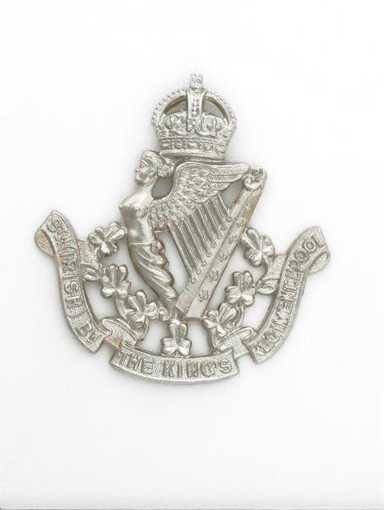 |
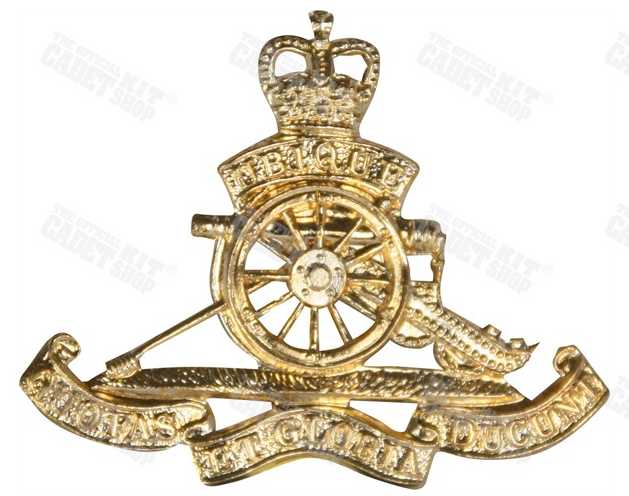 |
|
Cap
Badge - The
King's Liverpool Irish
|
Cap
Badge - The
Royal Regiment of Artillery
|
|
|
|
|
Miltary
Cross and bar
|
Territorial
Decoration
|